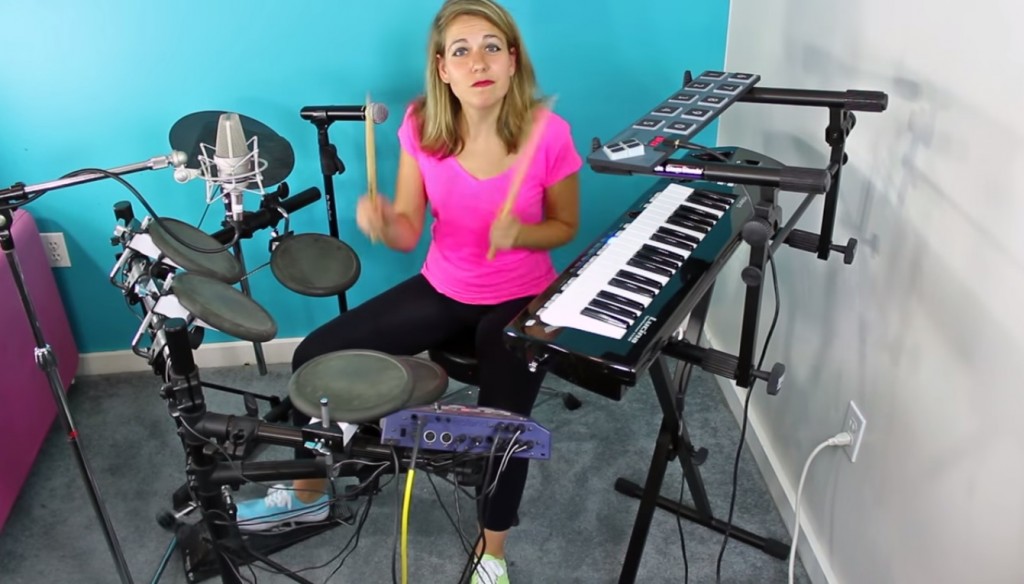
Like so many hopefuls before her, Ali Spagnola moved to Los Angeles to pursue her music career.
But Spagnola isn’t hoping to be “discovered.” She’s hoping to grow her online fan base, already in the millions, with help from the YouTube Space LA, a film production warehouse in Playa Vista that’s free for YouTube creators with at least 10,000 followers.
Spagnola, and the thousands of creators who use the YouTube Space LA, represent a new breed of entertainer that blends artistry with entrepreneurship.
Rather than rely on industry insiders to give them a television show, a record deal or a job, these artistic go-getters have built their own audiences that translate into ticket and merchandise sales as well as advertising dollars.
YouTube creators receive about 55 percent of the revenue made from the ads that run before a video plays. On photo-sharing sites like Instagram and short-video platforms like Vine, brands have started paying users with large followings to mention their products.
“There’s no such thing as selling out anymore,” said Spagnola, who has helped promote films for Fandango and Fox. “Brands are a means to an end, and people are OK with it.”
Spagnola rose to Internet fame with her “Power Hour Album,” a musical money-making concept that blends live performance, merchandising and traditional music sales.
The album, inspired by the college drinking game that requires everyone to drink a shot of beer every minute for an hour, is composed of 60 one-minute original songs.
Fans can buy the album directly from Spagnola’s website or at her live shows. The songs come on a USB drive embedded inside a plastic shot glass.
Spagnola is also on Vine:
And Twitter:
A piece of my trash can broke off and then I used that trash can to throw that piece away. I feel like I took part in some weird cannibalism
— Ali Spagnola (@alispagnola) March 27, 2015
Fans aren’t likely to spend money on music, but they are willing to pay for exclusive experiences and merchandise, which is why concert tours have become the main revenue source for more musicians, said Erik Nelson, a Burbank resident who created FanFlex, an app that helps musicians monetize their fan bases through live events.
“You need to get your music out there so you can create fans that will go to your shows, and then you can make money on that,” Nelson said. “Music is now a loss leader. It’s a marketing tool.”
Photographers and video producers are also finding audiences — and incomes — with the help of social media.
Action sports filmmaker Devin Graham has built a following of nearly 3 million on YouTube and has leveraged that viewership to get brands to produce some very elaborate projects, including hot air balloon rope swings and human sling shots.
Amateur New York photographer Kevin Lu bought his first camera in 2012. A year later he had so many followers on his Instagram account that he was able to quit his job as an engineer.
Brands now pay him $2,000 to $3,000 for a single post.
In good months, Lu makes as much as he did as an engineer, but his income is still “like a roller coaster,” he said.
While getting paid thousands of dollars to post a short video or 140-character tweet may seem like easy money, it’s not always easy to grow and maintain a large following online.
Spagnola described herself as a “middle-class musician” with her own business. But she also jokes that she’s a “self-employed slave.”
“If you skip a day, your income is gone,” she said.
In a world where fans expect content to be free, brands are stepping up where consumers have not.
“It’s no longer, ‘Oh, Pepsi is going to interfere with my artistic vision.’” Spagnola said. “It’s ‘Pepsi is going to enable me to make art.’ ”
